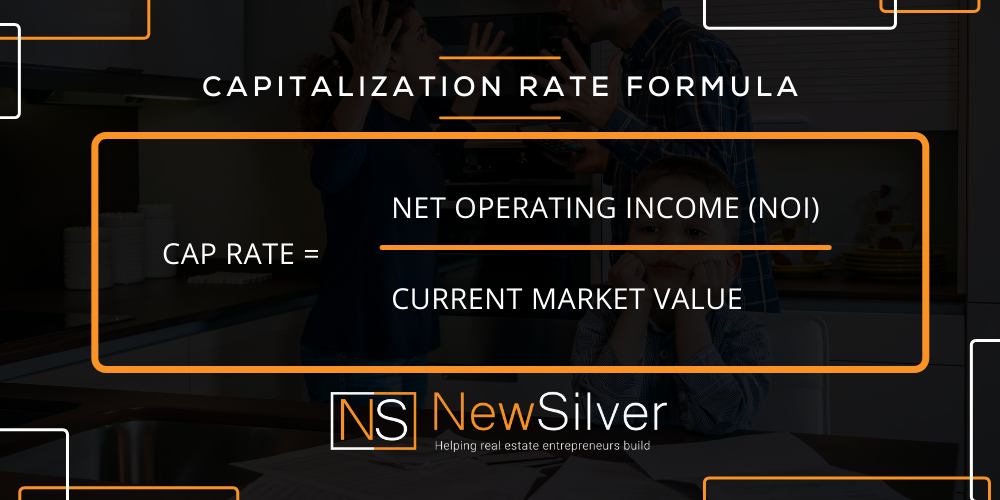A brief outline
Multi-family properties can be very lucrative investments, but it’s crucial to choose the right property. Before making an offer, make sure that you know how to evaluate a multi-family investment property to decide if it’s a good deal or not.
Table of Contents
Investors who are looking for another source of income every month will often turn to real estate, where rental properties offer an extra income while they appreciate in value over time. There are two popular types of rental properties to invest in, single-family and multi-family. Owning a collection of rental properties is a common strategy amongst real estate investors who are looking for a few extra streams of income, or who are full-time investors.
Multi-family properties have become a big part of these types of investing portfolios, and if you’re new to rental property investing, let’s delve deeper into the topic of how to evaluate a multi-family property like a pro.
What is the definition of a multi-family property?
A multi-family property is a residential property that has more than one housing unit, such as duplexes, apartment complexes, townhouses and so on. Investing in multi-family properties offers a few advantages over investing in single-family properties.
- Financing is easier: While multi-family properties may seem daunting to invest in due to the high cost, getting financing for these properties can be easier. In fact, financing is more likely to be approved by banks and lenders than single-family properties, largely due to the fact that multiple housing units within the property ensure a stream of income every month. Even if there are some vacant units, there will be a guaranteed income every month.
- Larger portfolio: Investing in a multi-family property instantly gives the investor a larger portfolio, without having to purchase a variety of properties. Multiple units all fall under the same umbrella, which makes financing and property upkeep easier.

How to calculate the value of a multi-family property
With such a big purchase, investors need to get their ducks in a row before committing to a property. Which means, they should calculate the value of the multi-family property first, before making an offer. Here’s how to do this…
1. Analyze the local market
Once you’ve chosen a property that you’d like to purchase, analyzing the location is a must. You’ll need to do research on the local housing market and get to grips with the city’s economy so that you can assess whether the property will appreciate in value over the next few years and by how much, as well as what the value of the property is now, based on the current market.
2. Search for comps
With most real estate investments, searching for comparable properties is a big help for determining the value of a property. Take a look at a few buildings nearby that are a similar size and have almost the same number of units. The NOI, cap rate, value and rental amounts will be useful for you to determine the value of the property you’re interested in. From this, you can determine if it’s a good deal or not and make informed decisions moving forward.
3. Work out the NOI
The Net Operating Income (NOI) for a multi-family property is used to determine what the property’s income generation is likely to be, based on its cash flow, and it helps determine the property’s value. To work out the NOI, you can subtract the operating expenses from the total revenue of the property for one year. The operating expenses include maintenance costs, management fees, insurance, property taxes and so on. While revenue includes rental payments, and also things like parking fees, laundry and other services.
4. Calculate cap rates
When you’re evaluating a multi-family property, one of the most important numbers to work out is the capitalization rate. Why? The cap rate will show you how profitable the property is. Essentially, the higher the cap rate, the more profitable the property is; however the listing price is also usually lower, which means that the property may need some upgrades. A lower cap rate can indicate a lower risk, but also a lower return on investment. You can either use the formula below or an online capitalization rate calculator to work out the cap rate.

How to analyze a multi-family property
Once you’ve worked out the value of the property, and what the return on investment would be using the calculations above, there are a few more factors to consider, to figure out whether the property is a worthwhile investment.
1. Do your due diligence
When you’re serious about investing in a multi-family property, it’s vital to do your due diligence. Which involves getting banks statements, having unit inspections done, seeing the rent rolls, and so on. This will help you decide whether the value of the property makes it a worthwhile investment or not, by giving you the facts in black and white, and highlighting any issues that the property or management may have.
2. Calculate your cash flow
Your cash flow needs to be such that you won’t be losing money every month, and that you’ll come out on top, even with a mortgage or loan. Your cash flow should take into account both the loan repayment and your capital expenditures (CapEx) in the future, and what’s left will be your profit amount. A good rule of thumb, according to some investors, is to make sure that your cash flow results in double-digit returns.

3. Raise the NOI
Now it’s time to see if you can find ways to raise the NOI of the property, which will result in a larger profit. You could employ various strategies such as raising the rent, offering paid storage, adding in a laundry facility, etc. Then, you should work on strategies to decrease expenses for the property, such as installing energy efficient appliances and fixing broken faucets. This will help you figure out whether the property has the potential to get even bigger returns, and you can make an informed decision on the deal from there.
Pros and cons of multi-family properties
Pros
- Property management is easier: A multi-family property calls for a property management company to handle the ins and outs of renting out the units. This makes life much easier for the investor who can take a hands-off approach and generate the monthly income without having to be a landlord.
- Larger income: A multi-family property generates a larger income every month with many units paying rent, which means that the cash flow is also bigger.
- Lower tenant risk: A single-family property relies on one set of tenants who need to be chosen very carefully and if they default, this will cause a major problem. Whereas a multi-family property relies on many tenants, so if some tenants default, there is still income being generated and it’s less of a blow for investors.
- Tax benefits: Multi-family property investors can claim depreciation on the property each year and get major tax advantages to offset the income they receive from the rental.
- Easier to insure: With multi-family properties needing insurance for a variety of areas, this can seem complicated, however insurance for these properties is actually easier to get. It also gives investors the opportunity to include all of their investments under one policy.

Cons
- Large expense: Multi-family properties are a huge cost, so if you’re new to real estate investing or this is your first multi-family property, bear in mind that these properties often cost millions of dollars.
- More time consuming: The more units involved, the more time consuming the investment will be. Even though you’ll be hiring a property management company, there can still be mishaps that require your attention and the more units there are, the more this can happen.
- Lower availability: There is a lower demand for multi-family properties and they are less common than single-family homes so there is a lower availability for them. You’ll need to look harder and perhaps wait for some time to come across the right multi-family property deal.
- Strict regulations: Multi-family properties have strict regulations because there are many properties being rented. Do your research first, to find out what the laws of the state and the country are, to avoid any issues.
How to get a loan for a multi-family property
Once you’ve decided that multi-family property investing is the route you’d like to go, your next step is to figure out financing. These properties can cost millions of dollars so this step will be the most important. First, find out if you qualify for a loan, whether that’s a conventional mortgage, FHA loan or a hard money loan, you’ll need to consider two factors: the down payment and the Debt-To-Income (DTI) ratio.
Down payment
When it comes to multi-family property purchases, the down payments are often higher. For example, 15% on a 2-unit property and 20% on a 3-4 unit property. Down payments will also vary depending on the type of loan, so make sure to do your homework on the type of loan that you’re applying for and get your ducks in row for how you can pay this.
Debt-To-Income Ratio
Your DTI shows a lender the amount of debt you have, relative to the amount of income you’re generating. So, your cash flow will be vital to show the lender at this stage, so that they can figure out if you’re likely to repay the debt without defaulting. The lower the DTI, the better chance you will have at securing a loan, and the general rule of thumb is to make sure your DTI is lower than 43%. However, the type of loan you’re applying for will dictate the DTI that is acceptable.
Final thoughts on multi-family property investing
Investing in multifamily properties is a good way to expand your real estate portfolio, earn additional income every month and gain experience in one of the most profitable industries on the planet. Successful real estate investing is about picking the right property, securing the best financing and interest rate, and maintaining a good cash flow. Now that you know how to pick a good multi-family property deal, you can go out and begin your search feeling empowered and informed.



